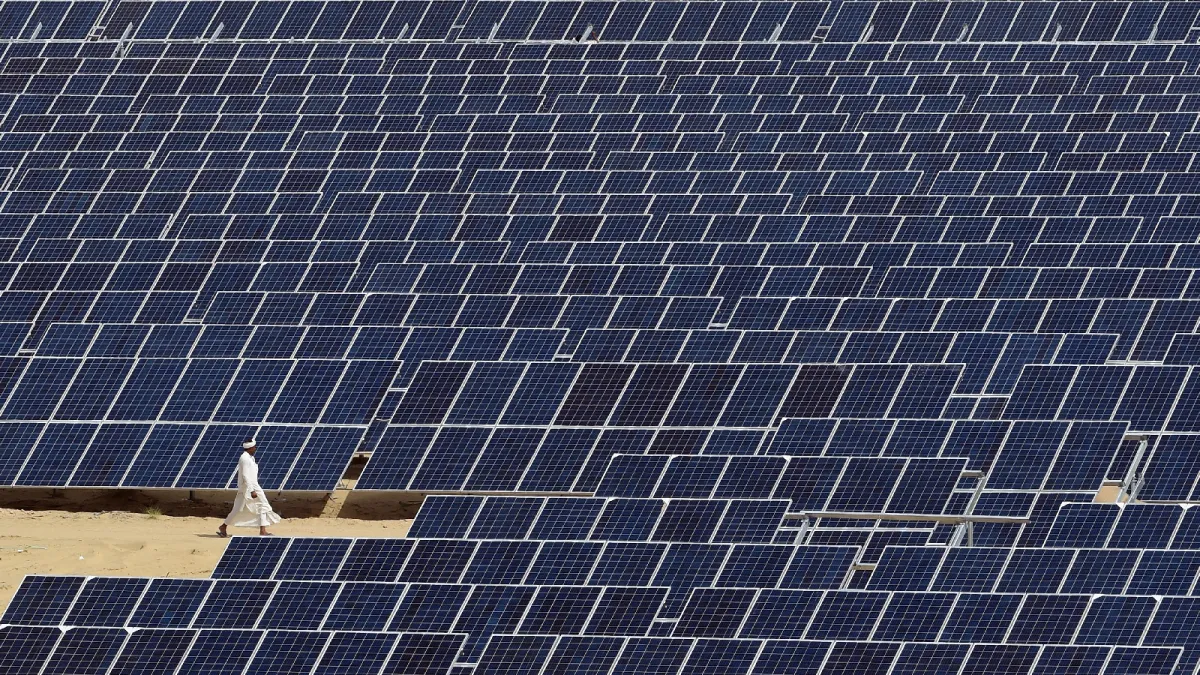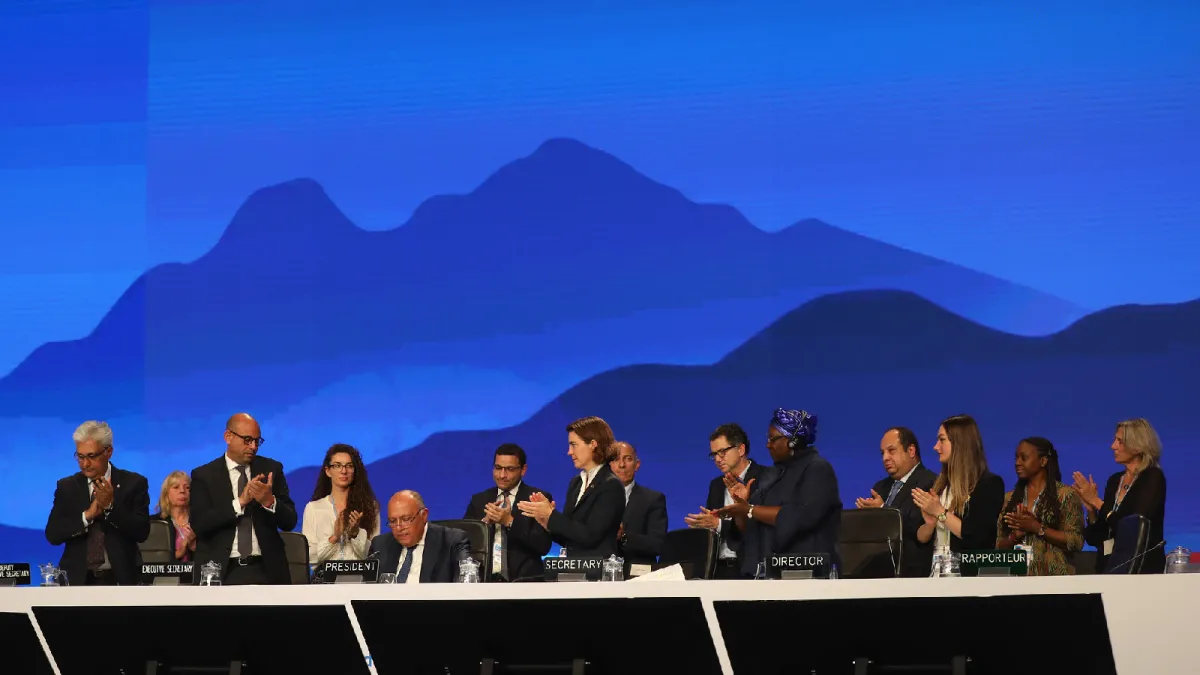How to Make the Green Transition Just and Equitable
Learn how efforts to slow emissions raise concerns over inequity and justice, and what we can do to ensure a more equitable and greener future.
Many world leaders are now committed to transitioning to a greener economy—one that can grow sustainably while avoiding the worst scenarios of climate change. The sooner that transition occurs, the fewer harmful effects the world will suffer from global warming. Everyone is vulnerable to the dangers of climate change, including sea-level rise and extreme weather. And climate change does not affect everyone equally. In many places, the people most vulnerable to climate change are also the world’s poorest.
At the same time, the global economic changes needed to fight climate change will have inequitable effects.
For example, the coal mining industry employs about 4.7 million workers worldwide. But scientists stress that stopping climate change means we need to stop burning coal. So what happens to those millions of workers? That question isn’t just about coal miners either. An estimated thirty-two million people work in industries driven by fossil fuels. More than that, many communities exist mainly to support those industries. If a coal mine closes, what happens to the people who transport the coal? What happens to the power plants and factories that use that coal? What happens to the schools, grocery stores, and restaurants near that mine? Shutting down fossil fuel facilities will reduce emissions and lessen the harmful health effects of pollution in the surrounding area. However, it will also cause economic disruption.
The good news is that, as some industries decline, new opportunities can also emerge. For example, one option could be to repurpose coal mines as green energy projects. The United Kingdom, for example, shut down its last coal plant in 2024. Instead of abandoning the former plants, though, developers have sought ways to repurpose them. Solar farms have been built over some former coal mines, helping the communities around them transition more easily to a greener future.
As policymakers think about that transition, they can also consider how to minimize the harms of that transition and make it as fair as possible. That is what some climate experts refer to as a just and equitable transition.
This learning resource will explore how transitioning economies to meet the challenges of climate change can raise issues of fairness, equity, and justice. We’ll also look at ways to address those issues, and the opportunities a climate transition can provide for the future.
Green transition is harder for some countries than others
Wealthier countries have more developed infrastructure that is better able to withstand the effects of climate change. They also have more resources to fund adaptation and mitigation projects while still investing in other economic developments.
Poorer countries, on the other hand, are less equipped to fight climate change. Most developing countries do not have enough resources to fund the projects needed to meet their climate goals.
And economic transition can force developing countries to lose out on opportunities to develop their economies in the coming decades. Many of today’s wealthiest countries developed during the 1800s and 1900s, in large part by burning vast amounts of fossil fuel. Today, however, poorer countries could be prevented from doing the same, as that avenue of economic growth is closed off to them in a global green transition.
How will the green transition affect jobs and labor?
The green transition will require phasing out industries contributing to climate change, like coal production. In other cases, transitioning to clean energy will require some industries to relocate closer to clean energy sources. This can cause jobs to be lost in the old location. One Harvard study that reviewed nine of the most energy-intensive industries in the United States found that over seven hundred thousand U.S. workers could be at risk for job loss when manufacturers relocate closer to renewable energy sources. Those job losses can also have ripple effects across entire communities.
On the other hand, the transition has and will continue to create millions of jobs. They include manufacturers of electric vehicles and wind turbines, workers mining for important resources needed for climate-solution technology like batteries, and many more. So-called green jobs are a fast-growing sector. In Europe, for example, solar power is expected to become the region’s main source of energy before the end of the 2020s. The World Economic Forum estimates that it could create about four million jobs in Europe by 2050.
The economic opportunities involved in the green transition also raise another challenge for policymakers. They encourage the growth of new industries while curtailing harmful economic practices. Take cobalt, for example. Demand for the substance has risen rapidly in recent years, as it’s essential for batteries that can power electric vehicles and store clean energy. At the same time, current sources of the critical mineral come from unsafe and exploitative operations. Meeting that rising demand can mean enabling unsafe or exploitative practices. As of 2020, 70 percent of the world’s cobalt was mined in Democratic Republic of Congo, where the U.S. Department of Labor has reported widespread child labor use [PDF] in mines.
How the green transition displaces some people
Green energy projects offer considerable benefits to the communities around them. For example, fossil fuel pollution contributes to millions of excess deaths a year. Beyond reducing greenhouse gas emissions, eliminating or replacing fossil fuel plants will also provide huge health benefits to the communities around them.
But the green transition can come with trade-offs. Many renewable energy projects—especially solar and wind farms—require large amounts of open land. The rush to develop renewable energy projects can disrupt the communities that live and work on that land. For instance, in India, the world’s third-largest greenhouse gas emitter, solar and wind development projects have been launched quickly to achieve emissions reductions. Because solar and wind farms tend to require large amounts of open land, many have been constructed on farmland. As a result, many people who worked on those farms have been displaced.
Green energy projects that threaten to displace communities can also stoke tension between local and indigenous communities and developers. In Mexico, for example, indigenous communities have claimed that the government approved wind farm projects on their lands without their consultation. They have also reported facing death threats and violence from the project’s developers.
How to ensure a just transition
Green transition efforts can increase the gaps between rich and poor countries, and between privileged and vulnerable groups. But governments, businesses, and international organizations can minimize the inequalities that arise in the transition to a greener economy, in the following ways.
Inclusion: Part of achieving a just and equitable transition involves ensuring that populations affected by climate actions are represented in the decision-making process. At the international level, that can mean holding forums where developing countries can coordinate and advocate for their needs. For example, at the annual UN climate conference known as the Conference of Parties (COP), a group comprising the forty-six least developed countries often votes together as a bloc. That approach helps them advocate more effectively for greater equitability in climate actions. At a national level, including stakeholders can mean consulting communities in areas where climate projects are being planned. Some advocates [PDF] have called for companies to conduct impact assessments in which affected communities, such as indigenous groups, can participate.
Funding: An equitable transition on a global scale requires major investments. The good news is that global spending on clean energy is rising. Experts are calling for ways to make clean energy cheaper and more economically beneficial for developing countries. But developing countries need financial assistance to take more climate action. At the same time, they are already experiencing the damages of climate change, which many are not sufficiently prepared to handle.
Wealthier countries are starting to provide more help on that front. At a recent major climate meeting, the Conference of Parties (COP) 27 in 2022, countries for the first time committed to developing a multilateral Loss and Damage fund. That approach connects with the idea of “common but differentiated responsibilities,” which holds that all countries are responsible for addressing climate challenges, but not equally. It is based on the principle that richer countries should support those that require more financial assistance and are hit hardest. One reason is that richer countries historically emitted the bulk of greenhouse gases that led to today’s climate change. The Fund aims to pool global investments to help pay communities suffering most from climate change. Unlike other forms of climate finance, which focus mainly on helping countries meet their climate goals, the Loss and Damage fund seeks to address climate change’s past and present destruction, regardless of adaptations.
The Loss and Damage fund marks a prominent step toward wealthier countries accounting for their historical role in driving climate change. A challenge remains, however, in ensuring those countries pay up to their commitments and meet the needs of developing countries. So far, wealthy countries have contributed less than $1 billion to the fund.
Climate investments can be more equitable on a national level too. Governments can direct the benefits of climate mitigation and adaptation spending to communities that have experienced the most pollution and poverty. In the United States, for instance, the Justice40 Initiative aims to ensure that 40 percent of the overall benefits of certain federal climate-related investments flow to disadvantaged communities.
Economic Repurposing: A green transition can disrupt many jobs and communities, but it can also offer new opportunities in the form of emerging industries. Governments can take steps to ensure industries and communities that face disruption can benefit from those opportunities. They can, for example, replace fossil fuel facilities with green projects. Some fossil fuel plants can be repurposed to suit clean energy projects. Chile, for instance, has launched plans to retrofit a coal power plant to house molten salts as a form of renewable energy storage.
Governments can also address the job loss that green transition threatens by funding labor retraining programs to help workers pivot to new industries. In the United States, the 2022 Inflation Reduction Act includes funding for community colleges and vocational programs to train workers for jobs in clean energy sectors.
Transitioning to clean energy remains an essential component of fighting climate change. In many areas, that transition is already underway. Some governments are beginning to acknowledge the unjust consequences of a green transition and to search for solutions, but the issue will continue to shape how policymakers tackle climate change going forward.






